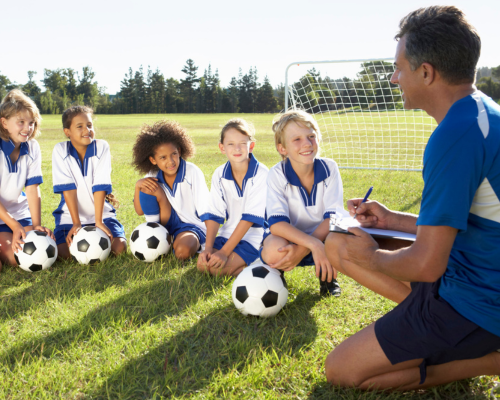Find out how to get your athlete in back-to-school shape for fall.
Looking to get a solid start for the new school year?
Put these recommendations into play to help improve performance both in the classroom and on the field, court or floor.
Get into a good sleep routine.
Studies of athletes have shown that getting under eight hours of sleep a night may result in a higher risk of injury or illness. Getting consistent eight hours of sleep can increase academic performance such as completion of timed testing, retained memory and organization skills while limiting the effects of attention deficits. Sufficient sleep can reduce the risk of diabetes, high blood pressure, being overweight and other health concerns.
Unfortunately, “banking” or “catching up” on sleep during weekends, holidays and school breaks doesn’t work. Getting that consistent daily sleep is the best way to go.
Make sleep a priority for the new school year. I advise patients to put up an eight-hour wall in their schedule — let’s say from 10 pm-6 am. No chirps, pings, texts or other interruptions are allowed. This is protected sleep time.
Sufficient sleep allows for sufficient recovery and preparation for the next day — in fact, if having to make a choice between an extra hour of sleep vs. an extra hour of training, or even an extra hour of a recovery session (stretching, cryotherapy, etc.), always favor that extra hour of sleep.
Many young people get into the habit of going to bed later during the summer. To adjust to earlier wake-up times for school, it is sensible to slowly adjust bedtime during the two weeks before school starts. Go to bed 10-15 minutes earlier each night until the desired school-year bedtime is met.
Get seen for that nagging injury.
Don’t just expect those nagging injuries to go away once school starts. Get an evaluation from a sports medicine specialist.
Once school and homework start, there is usually less time and openings in a day for therapy and rehab exercise sessions. Also, athletes tend to heal better over the summer when they can be more focused on recovery and don’t have the emotional overload and pressures from school commitments. Take full advantage of this flexibility and get a head start on recovery before the start of fall seasons.
Get started with meal prep and food planning.
Last-minute raiding of the refrigerator or cabinets right before leaving for school usually doesn’t produce some of the best choices for young athletes who are burning high levels of calories with sports and exercise demands.
Getting into the habit of pre-planning meals, maybe the night before or even using time on the weekends to prepare meals for the week ahead, can pay off in big dividends.
What are some relatively easy, portable and high-yield choices for young athletes on-the-go?
- Consider a mix of short-acting and longer-acting carbohydrates. Fruits give that short-acting boost, while bagels (better whole wheat) can give a longer-acting fuel source.
- Add some protein — peanut or almond butter on that bagel is a great combination.
- Try Greek yogurt (also gives calcium, vitamin D and even some probiotics to help digestion and the immune system).
- Don’t forget that chocolate milk is a great source of fluid and protein.
- Hard-boiled eggs provide protein and tend to be easier on the stomach (and easier to transport) than fried or scrambled eggs.
- Trail mix can give protein from nuts and also add raisins/other fruit-based sources of energy.
- Berries and cherries are also good anti-inflammatory foods that provide a good-tasting, healthy, post-game snack. Serving them cold or even frozen can make a hot day more tolerable.
- A cold serving of watermelon, apples or oranges provides fluid, vitamin C and certain salts needed after exercise. These are especially helpful in hot and humid conditions.
Dr. Chris Koutures is a dual board-certified pediatric and sports medicine specialist who practices at ActiveKidMD in Anaheim Hills. Please visit activekidmd.com or follow him on Twitter (@dockoutures).










Leave a Reply